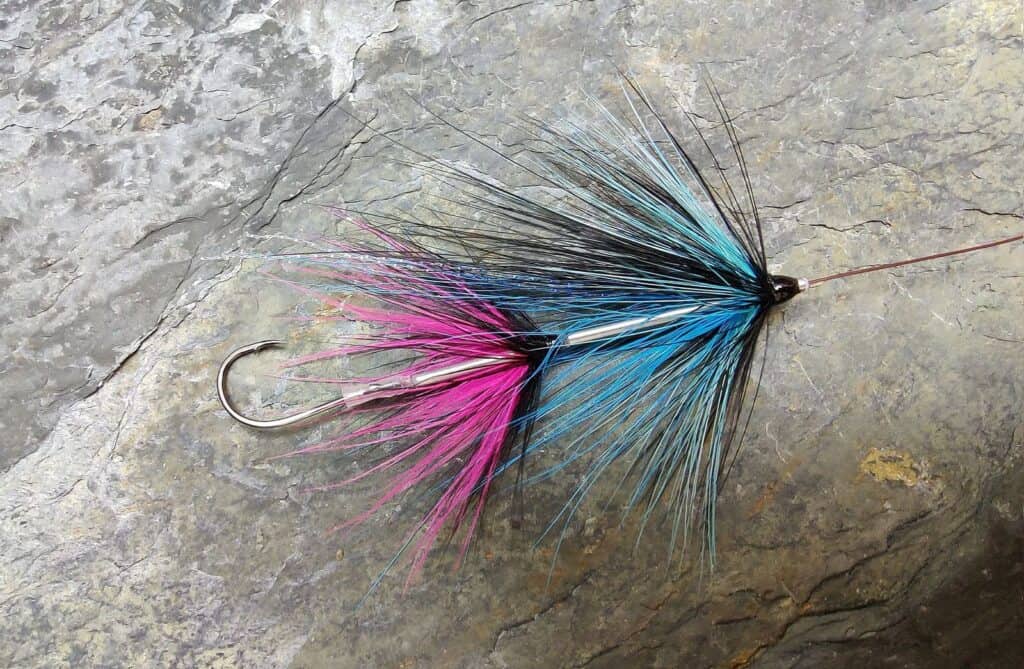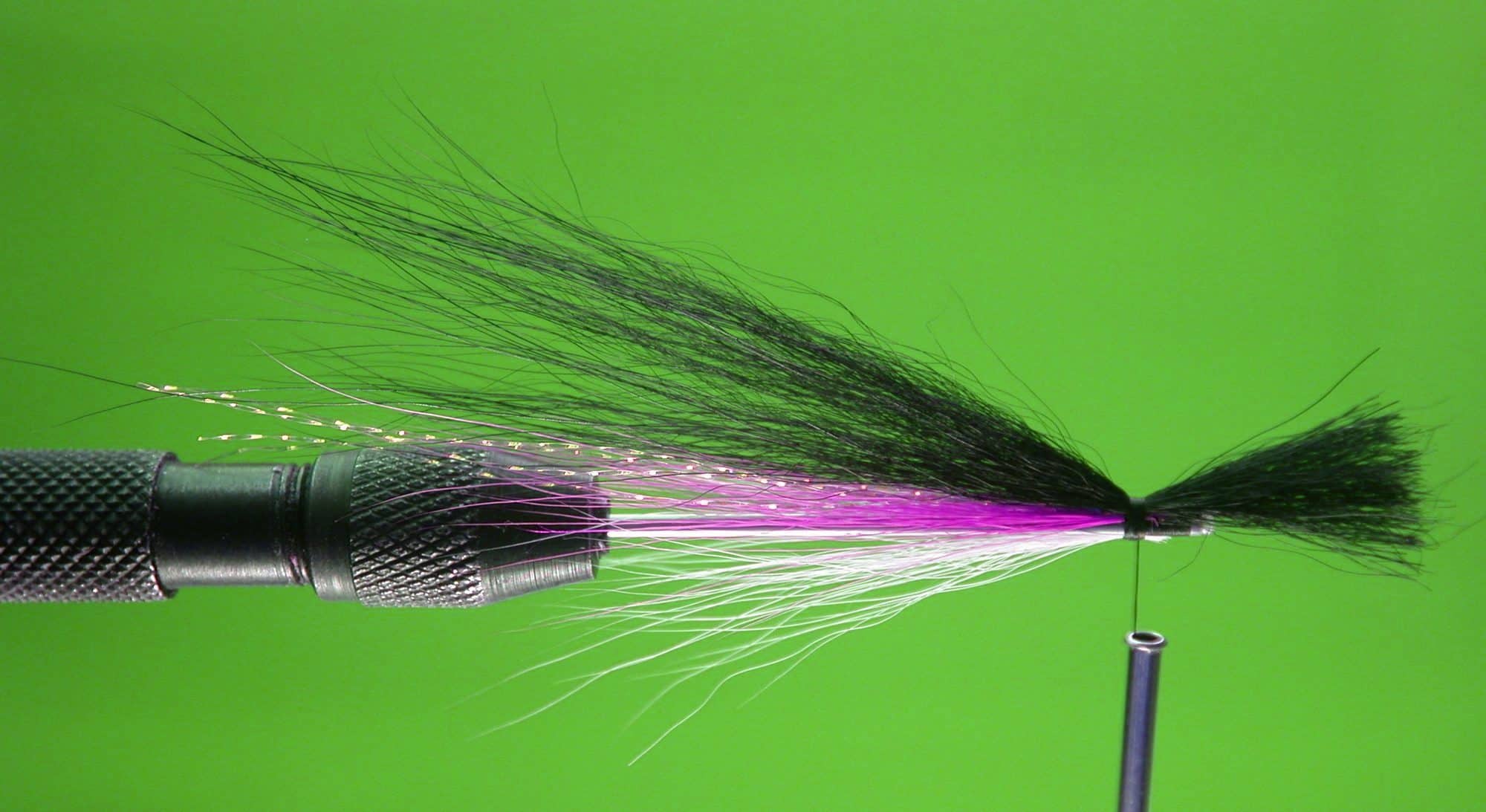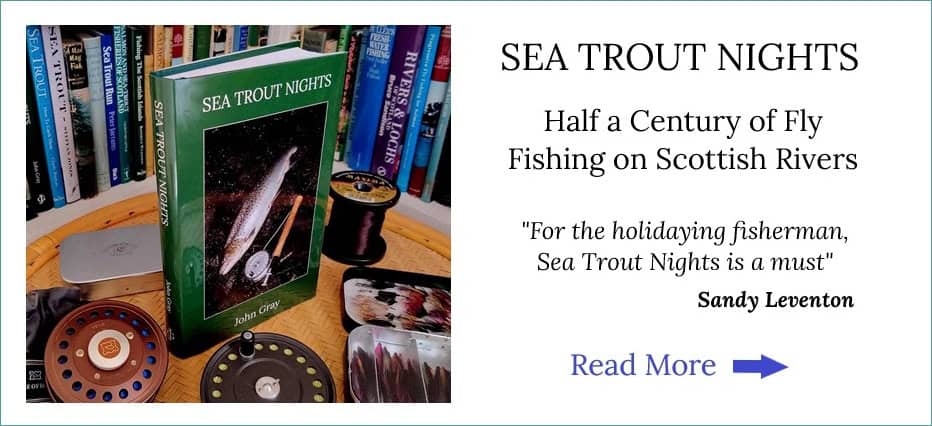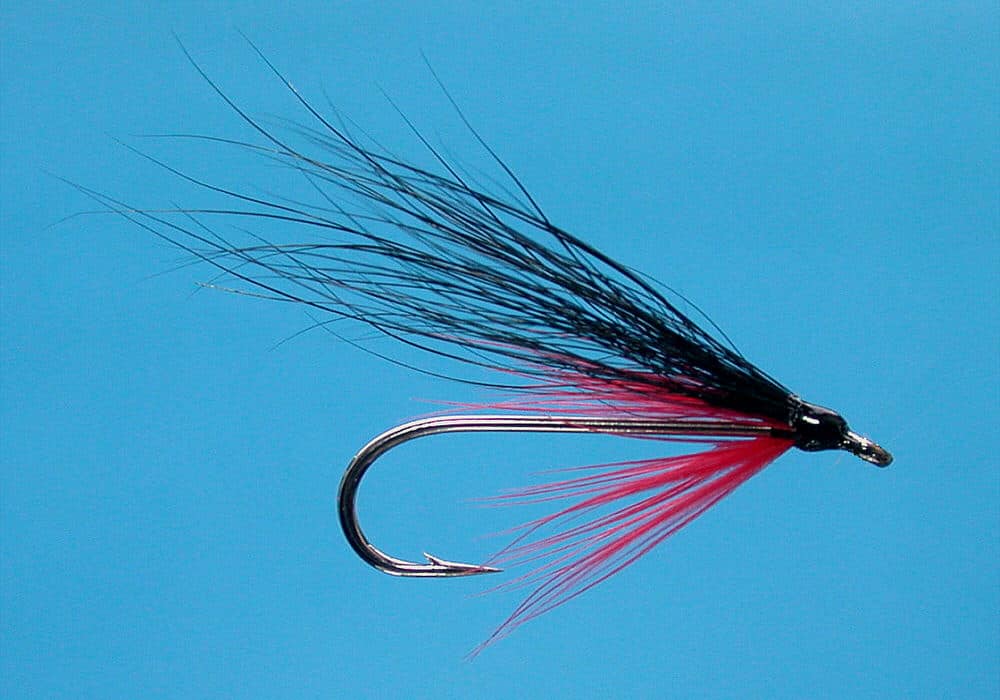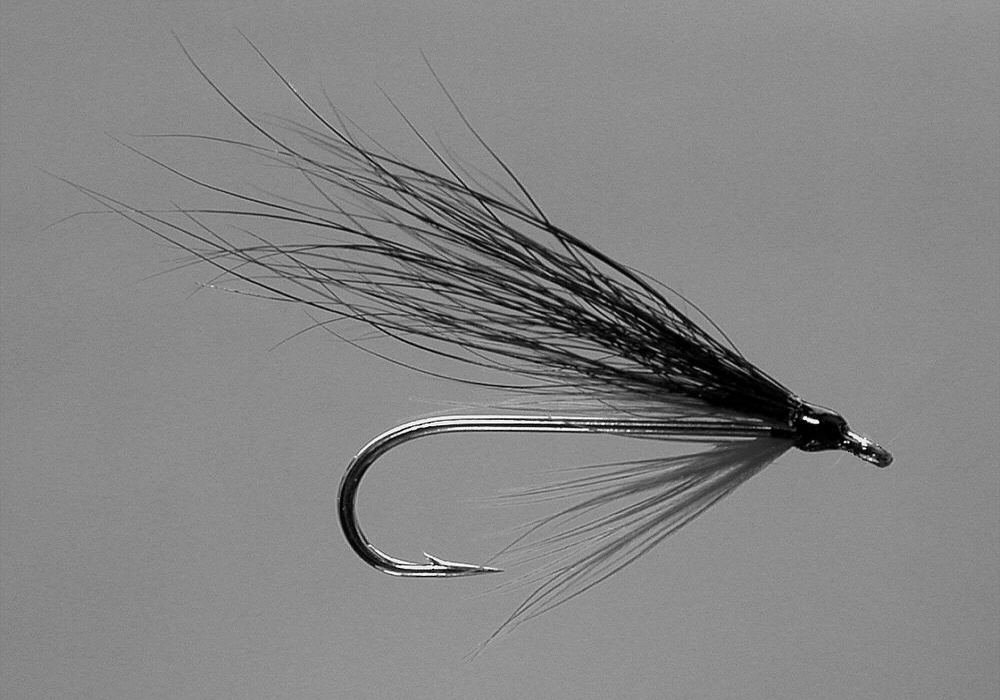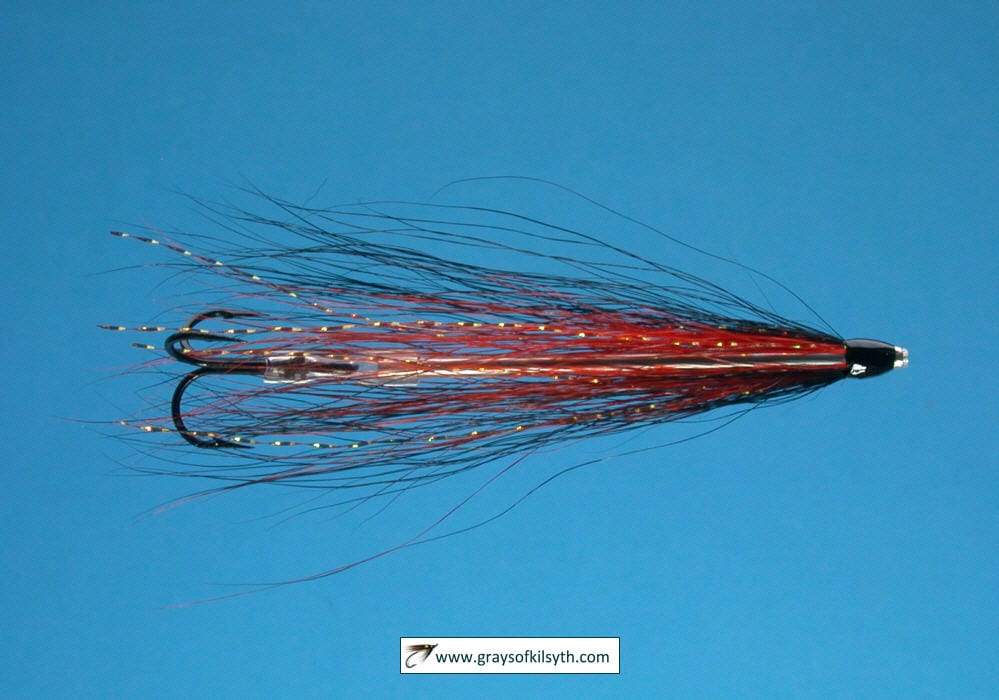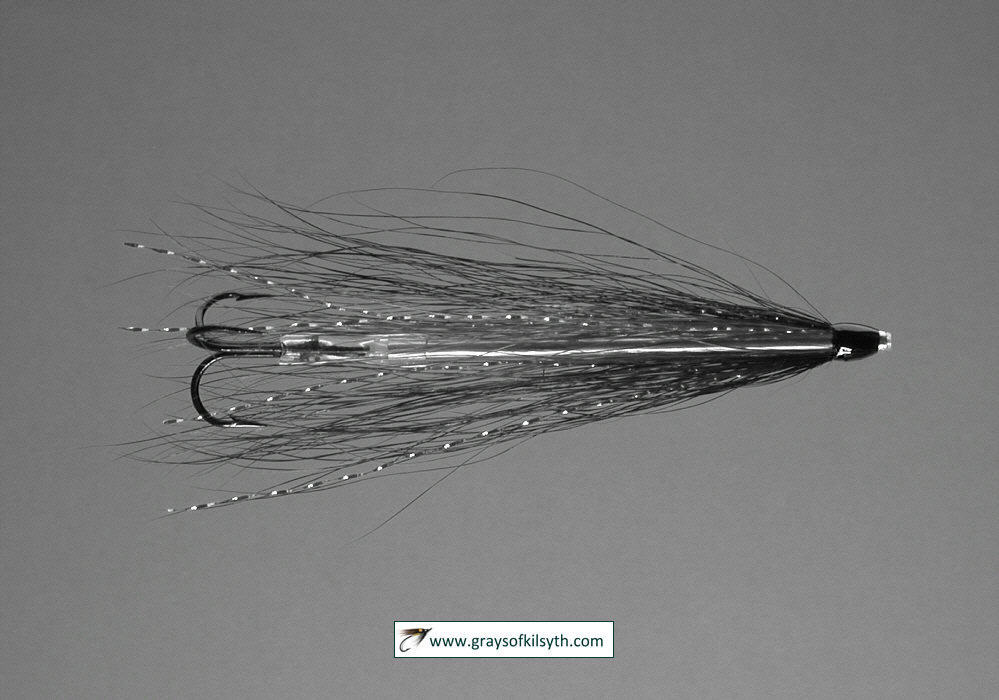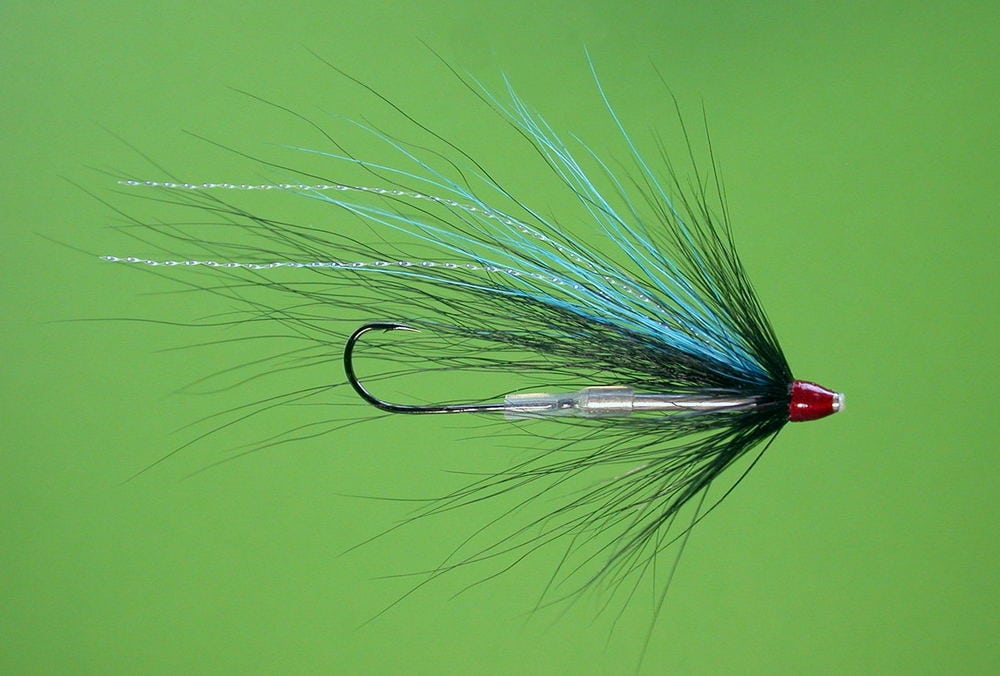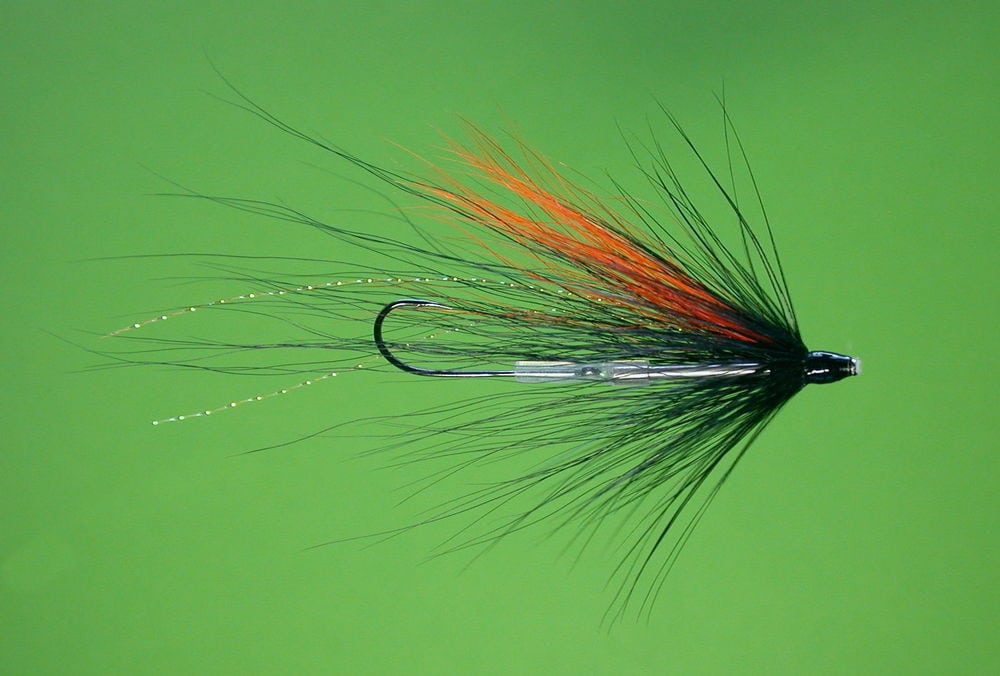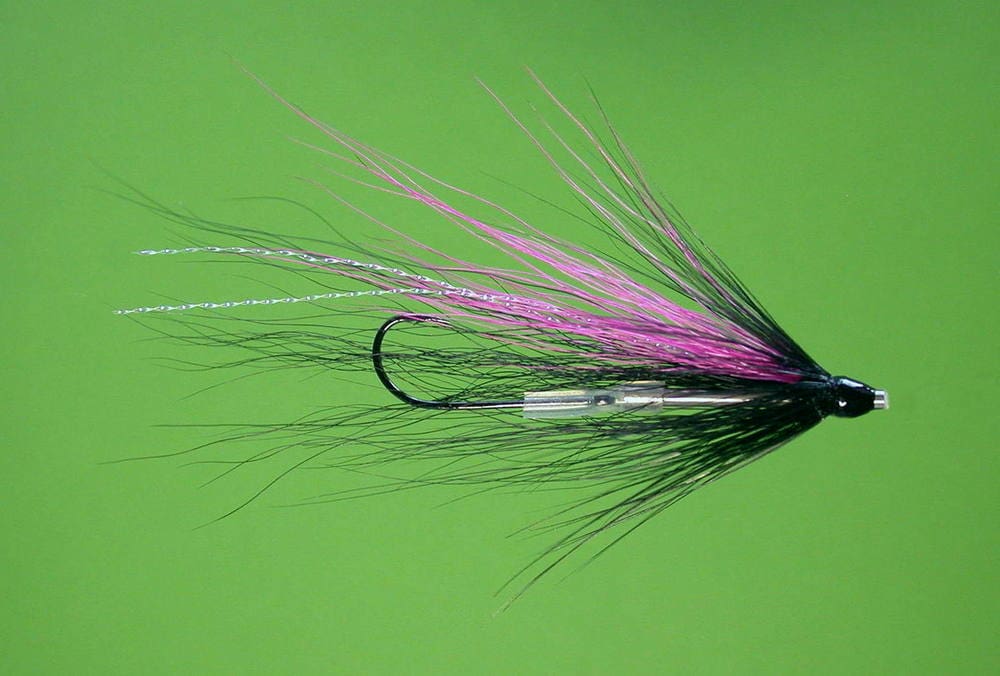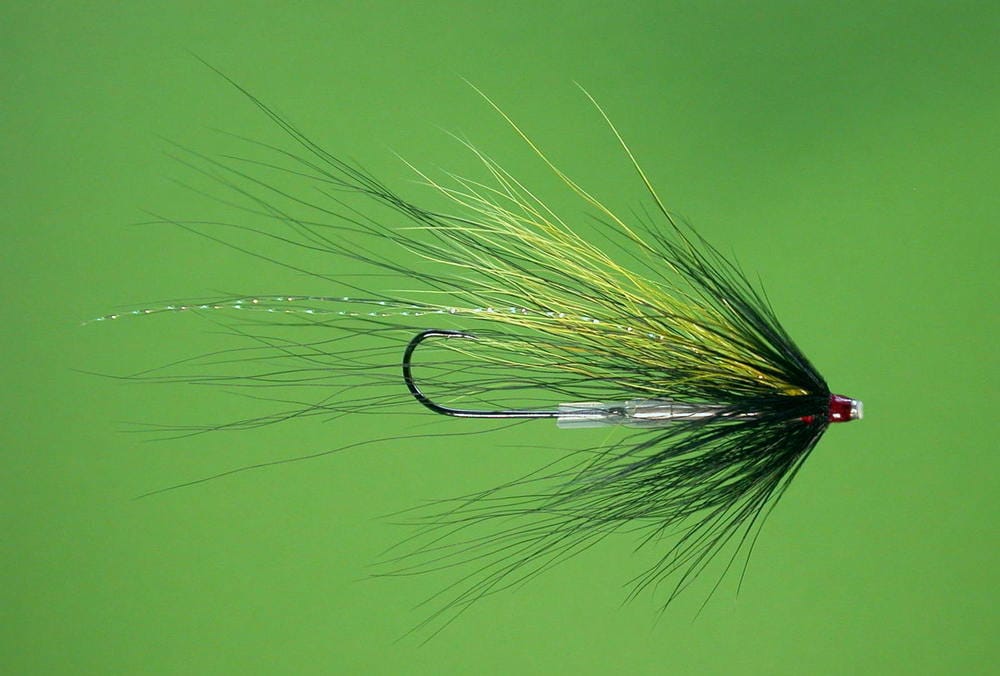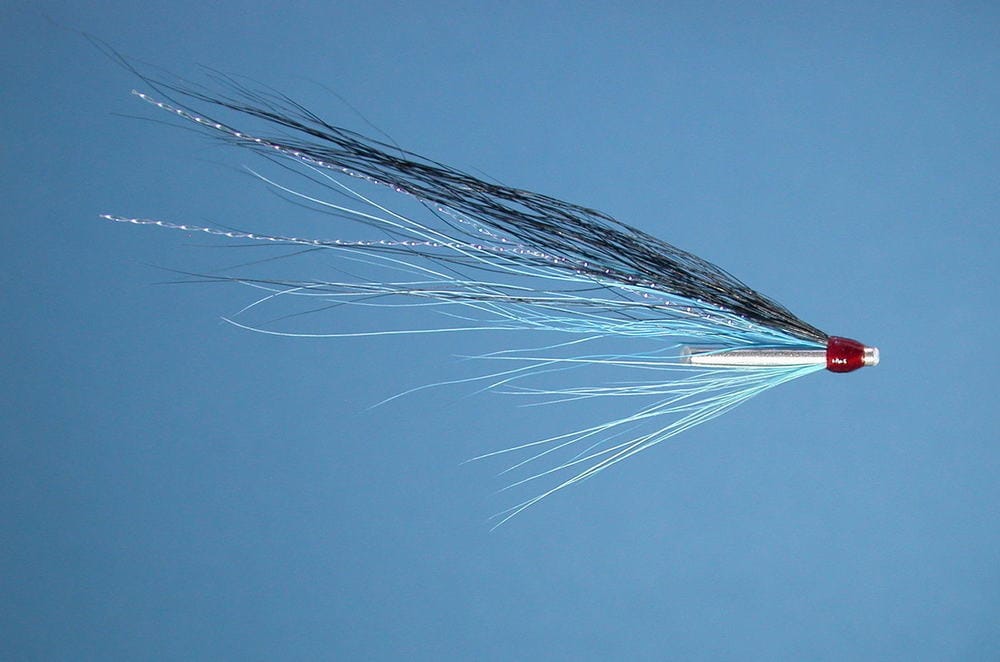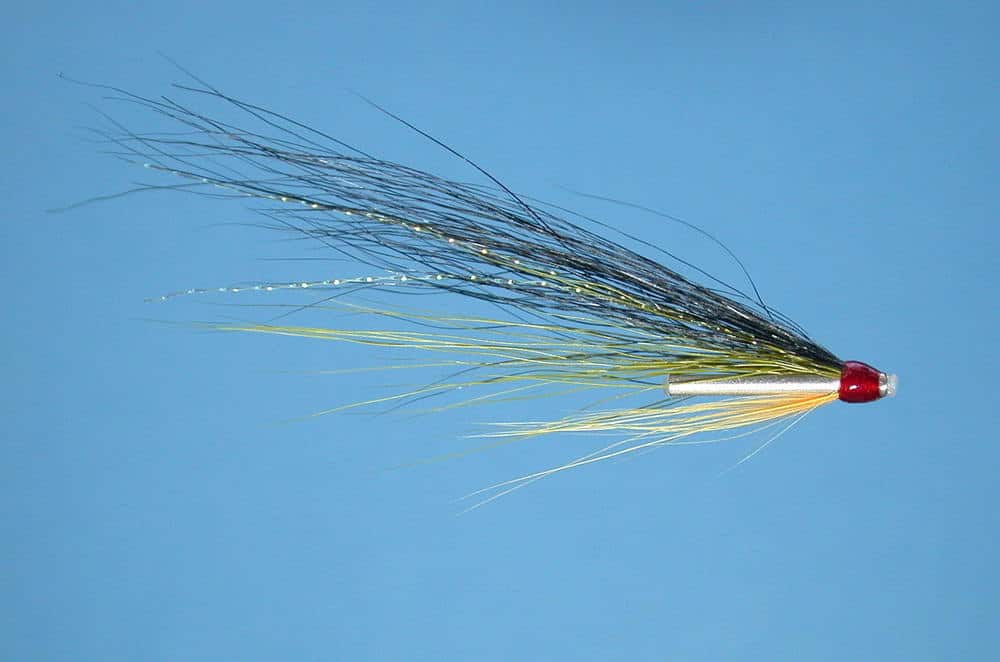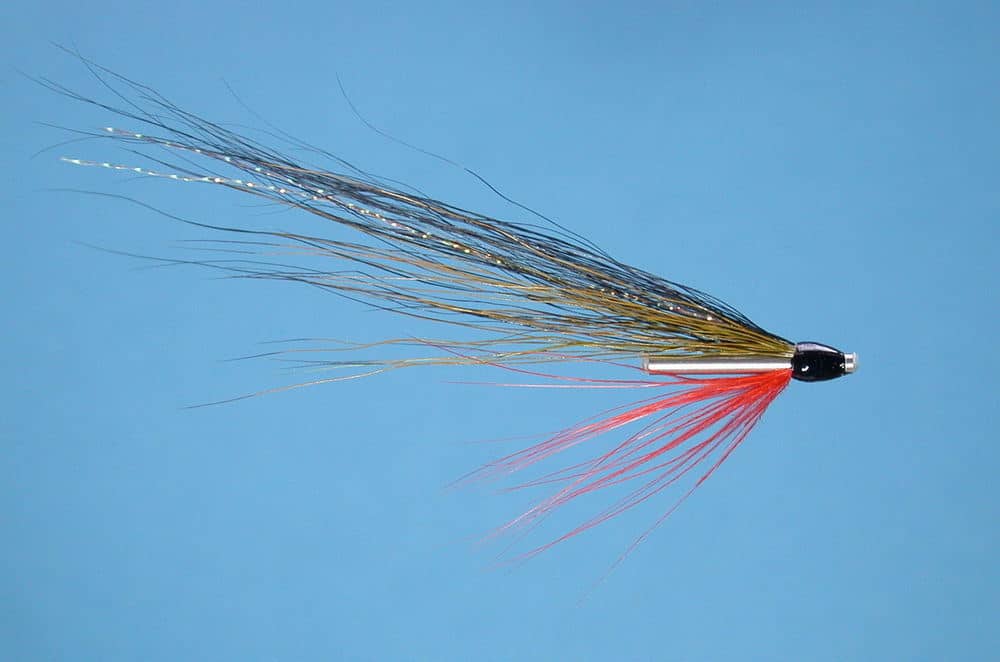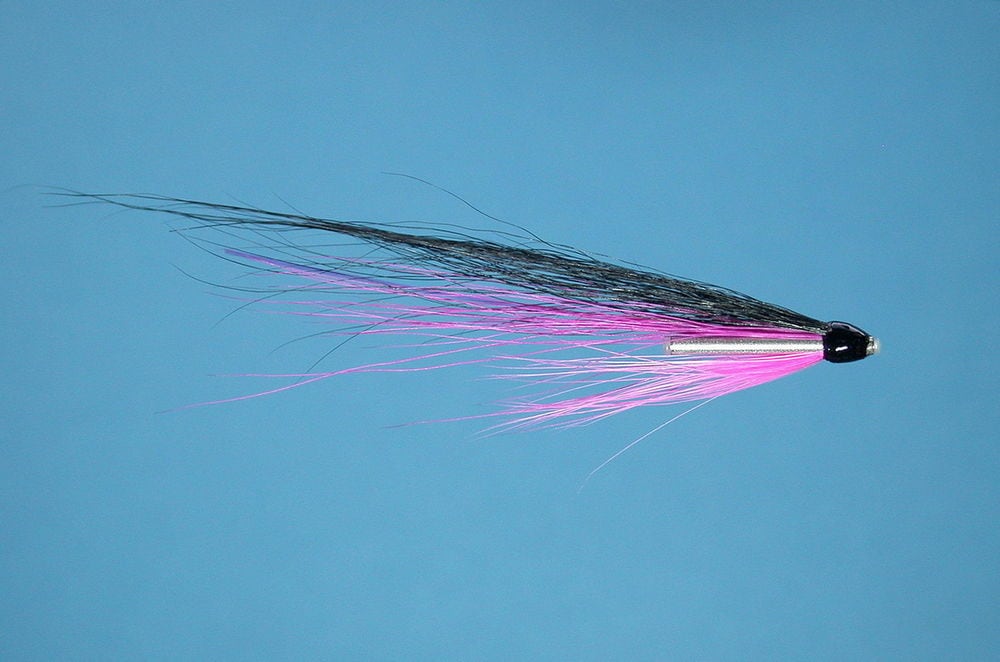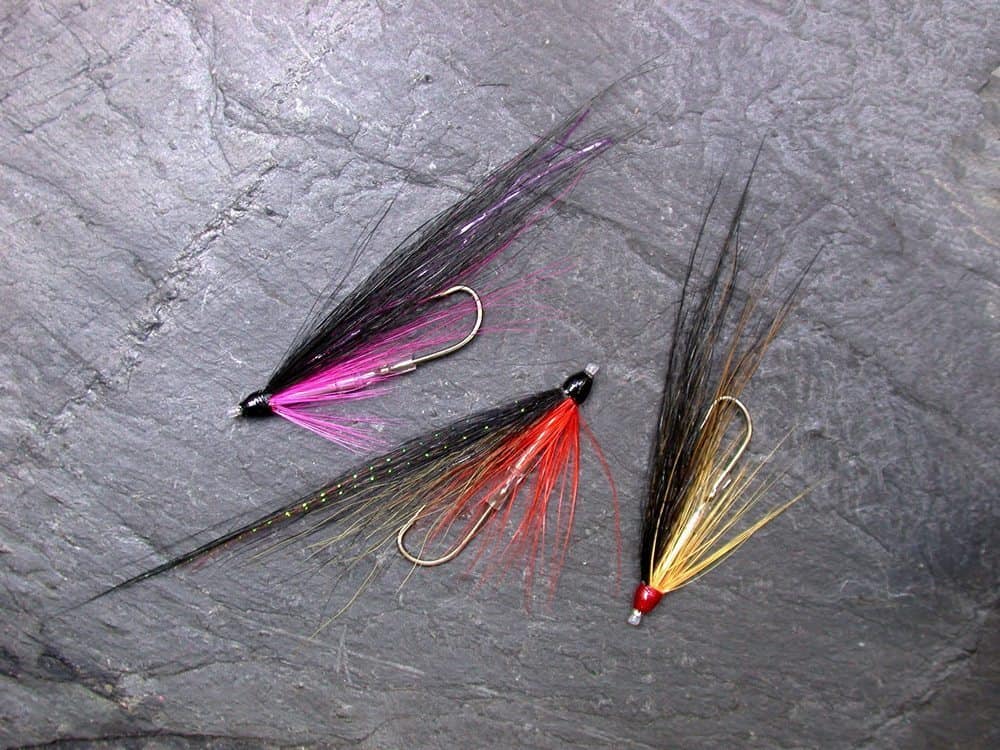Sea Trout Flies for Night Fishing
Sea trout may be caught on a great variety of flies, from small singles to long lures of three inches or more. Particular rivers and localities may well have their own special patterns, and anglers’ favourites may differ widely one from the other. It is worth remembering, though, that sea trout cannot distinguish colours at night any more than we can. Once it is truly dark, different colours will appear, both to us and to the sea trout, as varying shades of grey, so we need not worry too much about the colour of our sea trout night flies, except for their tonal qualities. Incorporating a splash of colour in our sea trout flies will, of course, do no harm and, in addition to creating some variation in shade or tone, will provide a useful variety if used in daylight. The night flies in our sea trout boxes should certainly be varied, but not so much in colour as in length, bulk, weight, density, mobility, tonal quality and the degree to which they reflect light. It might be reasonably argued that a simple black fly, or perhaps a black and white fly, dressed on a silver hook or tube, will be as effective as anything for sea trout at night.
I have no doubt that the size of the fly is very much more important than the colour. As a general rule, I fish smaller flies early in the night and longer flies later when the night is darkest, but this will depend on conditions, too. A higher river or colder night might suit a larger fly. I like to keep things as simple as possible. I generally fish for sea trout only at night. I rarely fish anything smaller than a size 10 single or longer than two and a half inches, the longer lures dressed on needles or, more likely now, Needle Tubes. For flies up to about an inch long, I tend to use singles.
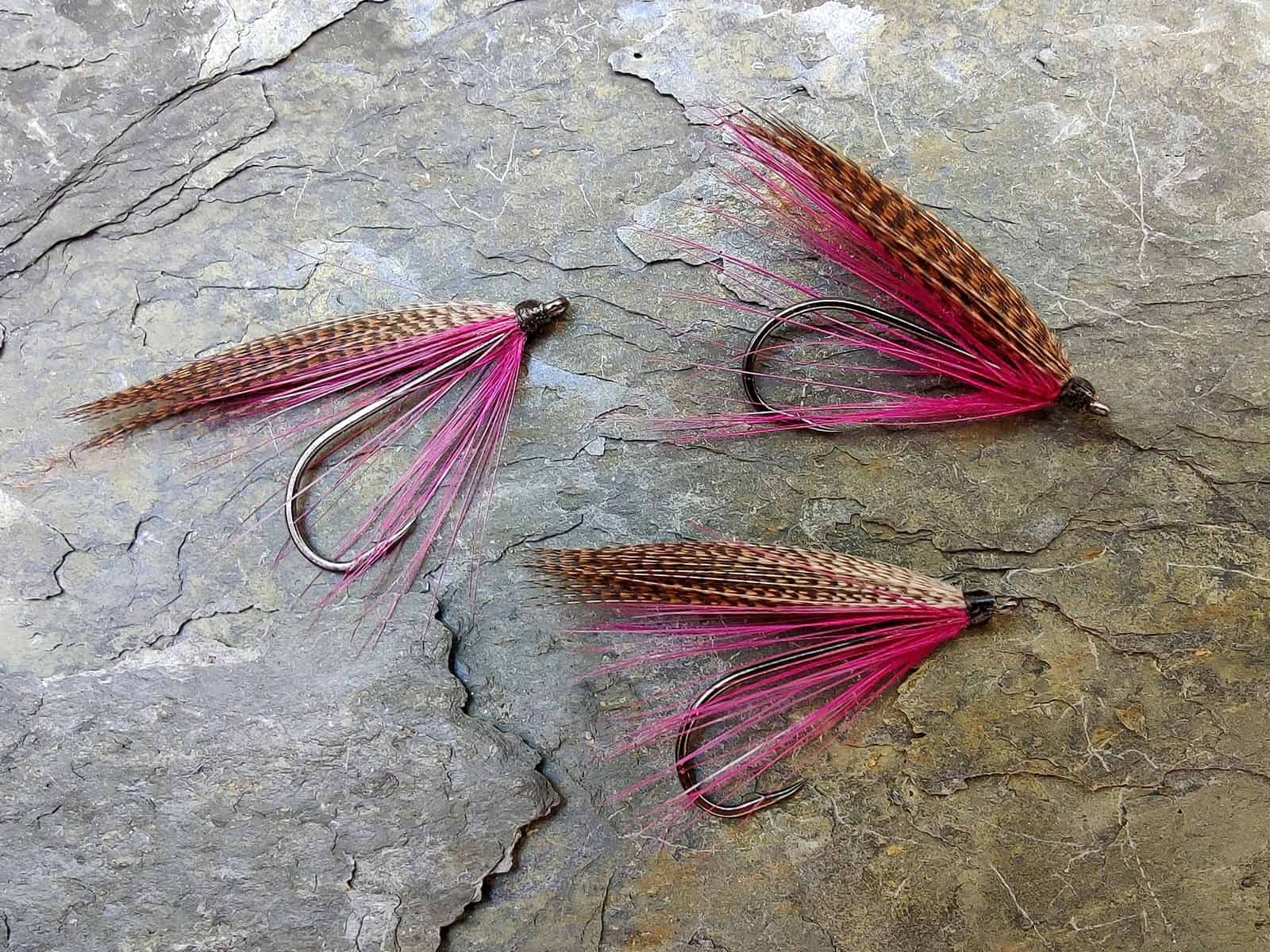
I dislike single hooks which are either very short or very long in the shank, relative to their gape. A short shank hook will not allow the hook point to penetrate so readily, owing to the less acute angle of penetration (for the same reason, I do not like outpoint hooks), while a long shank hook, although hooking more efficiently, owing to the hook point being pulled more directly in line with, and more closely parallel to, the pull of the line, may be prone to loosening during the fight due to excessive leverage.
My favourite hooks, which I have found efficient in both hooking and holding sea trout, are the Partridge Captain Hamilton in size 8; Gamakatsu F31 (shown above) and the Partridge Saltwater Perfect, also in size 8. The Saltwater Perfect hook (similar to the Mustad Aberdeen Ultrapoint, 3261NP-BN) is a well-made hook, slightly longer in the shank than a standard hook and with a nice shiny black nickel finish. With no body dressing, it makes for a very simply dressed, fish imitating fly such as those shown below, which are very effective despite, or more likely because of, their simplicity.
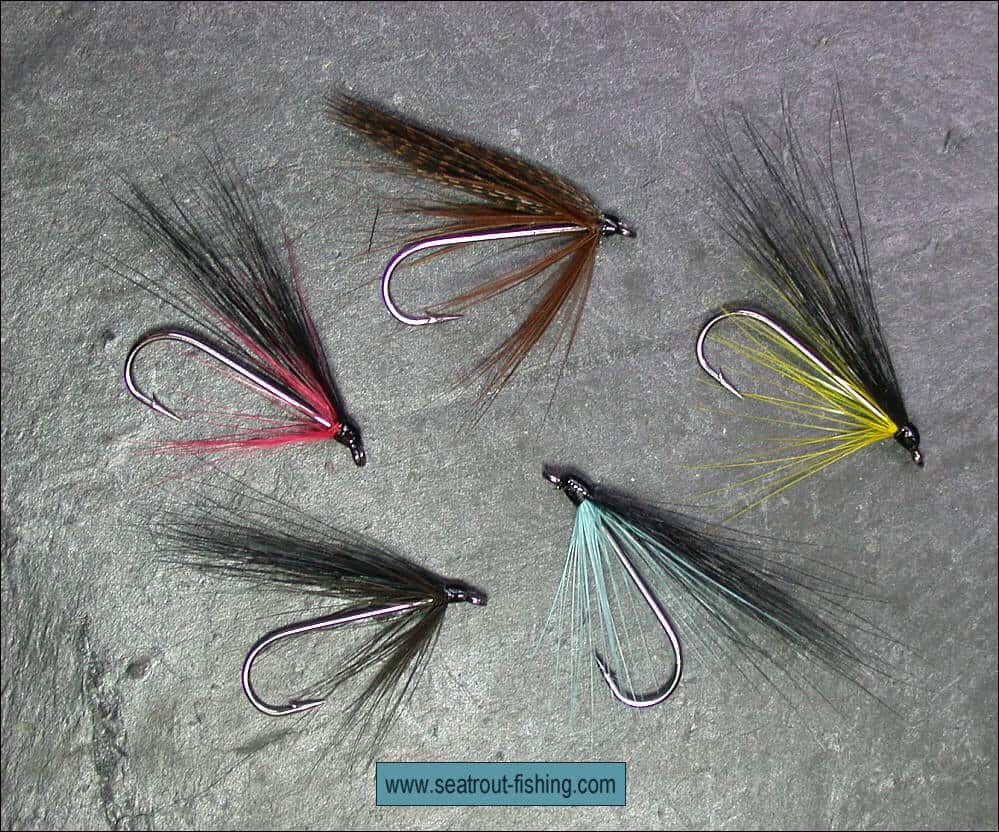
My approach to sea trout fly fishing and fly tying has, I am sure, been influenced very much by some of the ideas and writings of Falkus. He expressed the firm belief that the most effective sea trout lure would be one which, rather than setting out to imitate a creature on which the sea trout had recently preyed, created a tenuous “impression” of such a creature, a tantalising reminder to stimulate an instinctive response. For a fish which was not actively seeking food while in the river, indeed one which had no need for, and little interest in, food, this made a lot of sense to me. A slim, translucent, mobile, sparsely dressed lure, with a bit of glint, seemed to me to be the way to go and this basic objective of creating an impression rather than an imitation has since been reflected in most of my flies, not only for sea trout but also for salmon.
Tube Flies
The tube fly offers some important advantages over lures dressed more conventionally on hooks or on wire shanks. Firstly, a tube may be selected of a particular length, weight, material and diameter to suit virtually any fishing situation. Secondly, a tube may be armed with a variety of hooks, be they single, double or treble, barbed or barbless, of which there are a wide range now made specifically for the purpose. The chosen hook may be allowed to swing freely behind the tube (see How to make a knot guard (or swing tube) for a Free Swinging Tube Fly Hook ) or it may be fixed in position by means of a flexible silicone hook link, reducing the likelihood of the hook hold working loose through leverage. In the event that the hook should become damaged, it is easily replaced, thus extending the useful life of the tube fly. Until recent years, however, the choice of tubes available for fly tying was fairly limited and, for sea trout fishing especially, where I have always looked to present my quarry with a slim, sparse, impressionistic offering, seemed to me to be generally rather bulky.
The Needle Fly
This led me, in the late nineteen nineties, to experiment with alternative options, which led, in the first instance, to the development of the Needle Fly, as described in the article “Needles for Sewin”, Trout & Salmon magazine, September 1999. I sought then to devise a long slim lure, slimmer than the then currently available tubes and Waddington shanks, more easily and cheaply made, which would serve for late night fishing, at the time on the River Earn. It would have the following properties:
- It would be as slim as possible
- It could be made in varying lengths and weights
- It would be armed with a treble hook which would be easily attached and changed when necessary
- It would be light enough to cast easily on a single handed rod
- It would be easy to construct using inexpensive and readily available components
The result was the Needle Fly, as shown below.
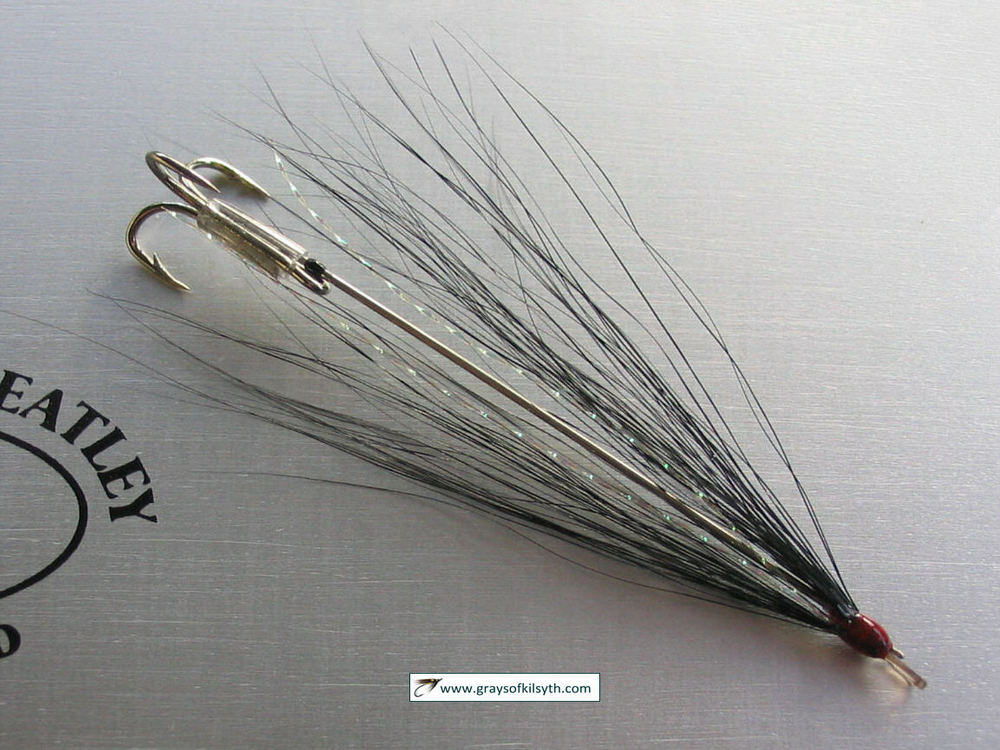
In the following decade, the needle fly accounted for the majority of my sea trout, on the Rivers Earn, Border Esk and Spey.
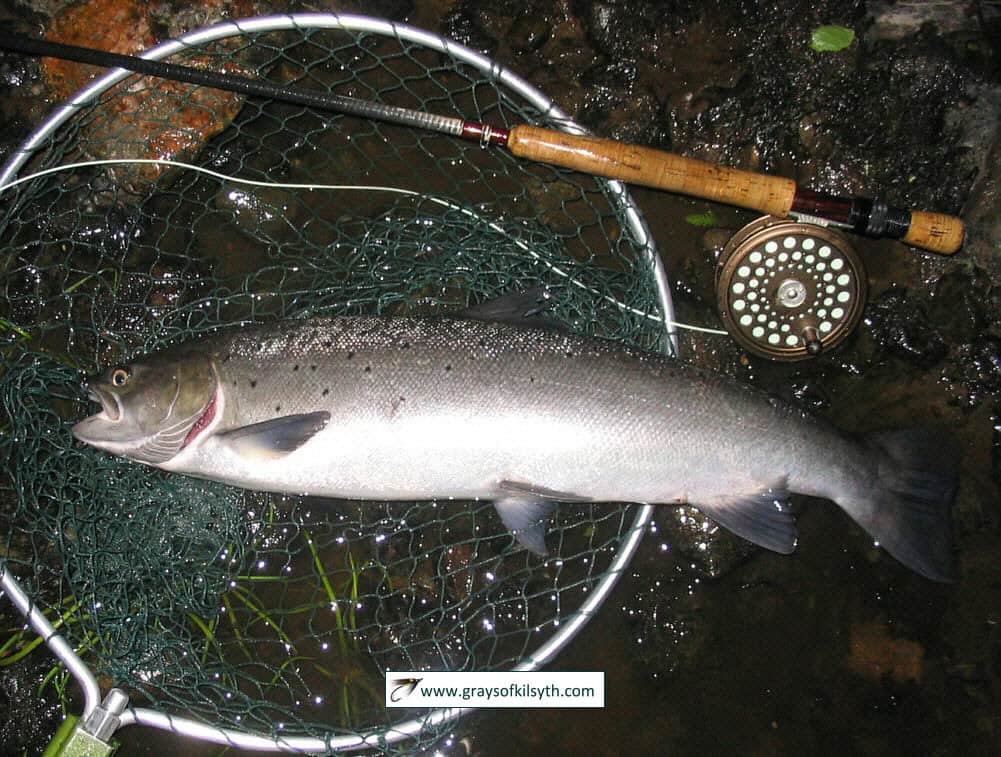
A Few More Needle Flies
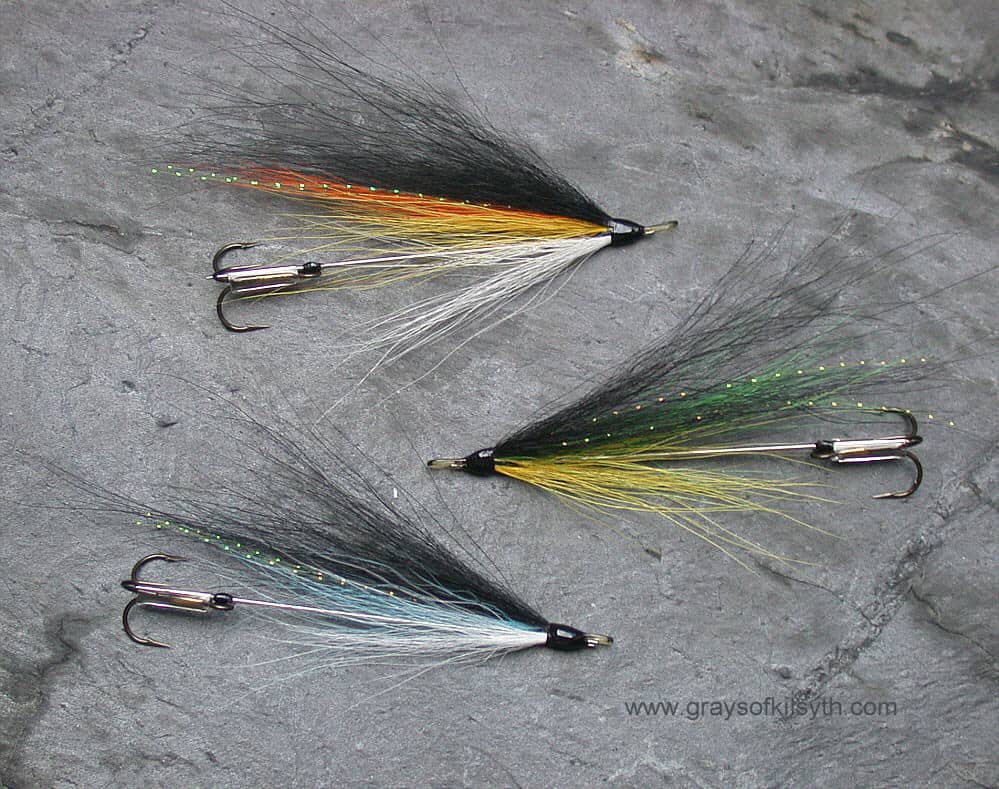
Read more about the development of the Needle Fly
Sea Trout Needle Tube Flies
My attention then turned to the possibilities offered by tubes. Given the undoubted merits of the tube fly, I wondered if it would be possible to make a really slim tube fly which would do the same job as a Needle Fly. In collaboration with Dave Wallbridge, who shared my keen interest in sea trout night fishing, I began to explore the possibilities of using fine stainless steel tubes, hypodermic needle tubing in fact, which is made in a whole range of diameters and weights, with outside diameters down to less than 1.0 mm. The problem, of course, would be to find a way of lining such fine steel tubes, which would otherwise cut through a nylon monofilament fly leader in no time. The fine bore of the slimmest of these tubes precluded the use of a conventional plastic liner. Our solution was to shield the sharp tube ends by using very fine heat shrink tubing at both ends of the tube. This worked very well, as described in our article on Micro Tubes .
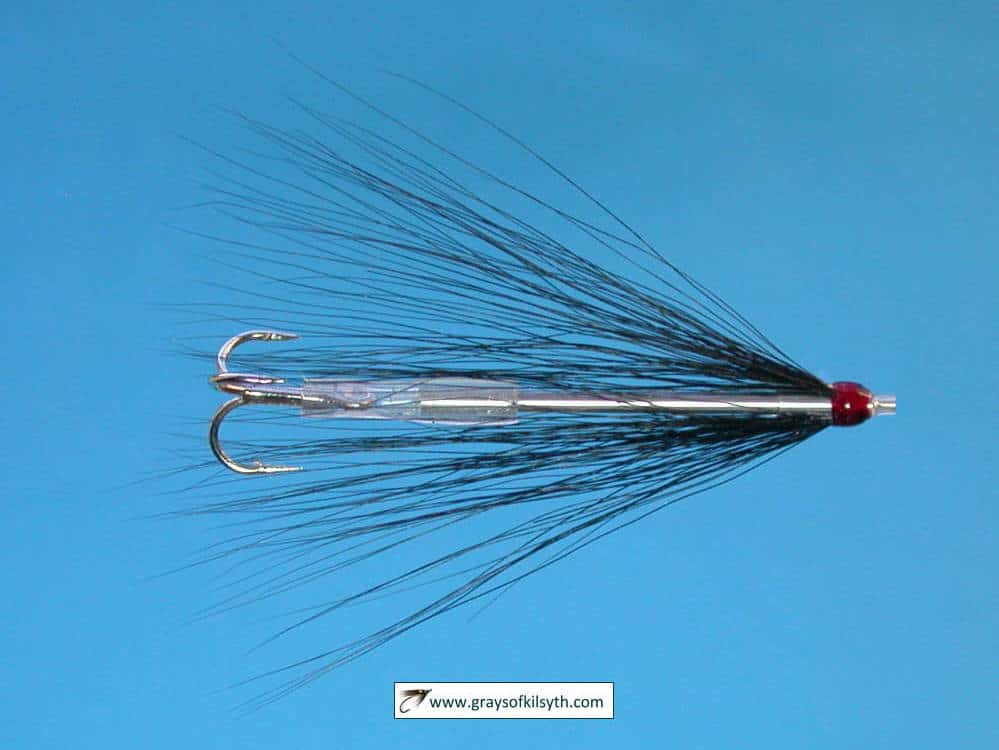
Our Micro Tube flies, with outside diameters of around 1 mm, were extremely effective but it was only feasible to make them on a very small scale. Would it be possible, I wondered, to make a more conventional type of tube, of slim stainless steel hypodermic needle tubing lined conventionally with a plastic liner, with a view to making them available in quantity? More experiments followed, leading ultimately to the development of the Needle Tube, as described in the article “A Shot in the Arm”, Trout & Salmon Magazine, May 2008 and since made in Scotland by Grays of Kilsyth, in diameters of 1.5 mm and 1.8 mm, and in lengths from 10 mm to 40 mm.
The Needle Tube Fly
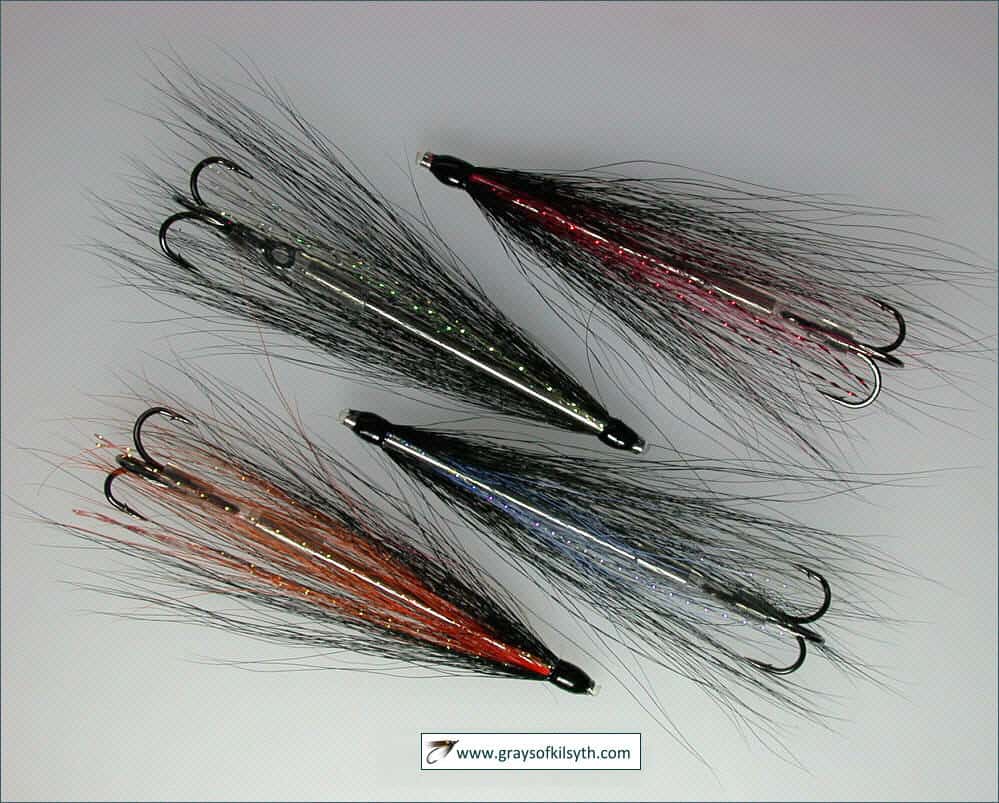
Colour in Sea Trout Night Flies
So today’s sea trout fisher has a great many flies to choose from, or he may dress his own to taste and to meet the specific requirements of his own fishing. It is worth noting, however, that, if the fly is to be used in the generally more productive hours of darkness, it is debatable whether colour matters at all. As sea trout are no more capable of distinguishing colour at night than we are, the use of colour in our night flies is largely meaningless. Colours will be seen simply as varying shades of grey and it might be reasonably argued that coloured fly tying materials, hair and hackles are superfluous, except perhaps for their value in creating slight tonal variation. Flies of black, or perhaps varying combinations of black and white, with a silver body or silver ribbed black body, will generally be as effective as any other. Still, the use of colour in our sea trout flies can do no harm and, in addition to providing a bit of useful variation in flies intended for both night and daytime use, offers an opportunity for close season creativity on the part of the fly tyer.
What sea trout see?
Sea Trout Tinglers
Over the years many of us have tended to arm our tube flies with treble hooks. A small treble just looks right on the end of a long tube fly, especially if the dressing is tied all round or with an equal amount of dressing top and bottom, as in the majority of the tube flies illustrated above. The small treble hooks and holds on to fish fairly well, although probably no more efficiently then a fly dressed on a single hook. Indeed, I have probably lost as many sea trout hooked on trebles as on single hooked flies.
The growing focus on catch and release, allied to increasing restrictions on fishing methods and tackle, has seen a ban on the use of treble hooks on many rivers, leaving us to seek alternatives to some of our favourite traditional lures, or at least to arm them with double or single hooks rather than trebles. One possible solution is the “Tingler”.
The Tingler is simply a needle tube fly armed with a single hook. The single hook may be left undressed or may be dressed as in the example below. It is intended primarily for sea trout at night but the principle and dressing may be adapted for any predatory fish. I think that a sparsely dressed tube, combined with the flared dressing on the single tail hook, creates a very fishy impression in the water.
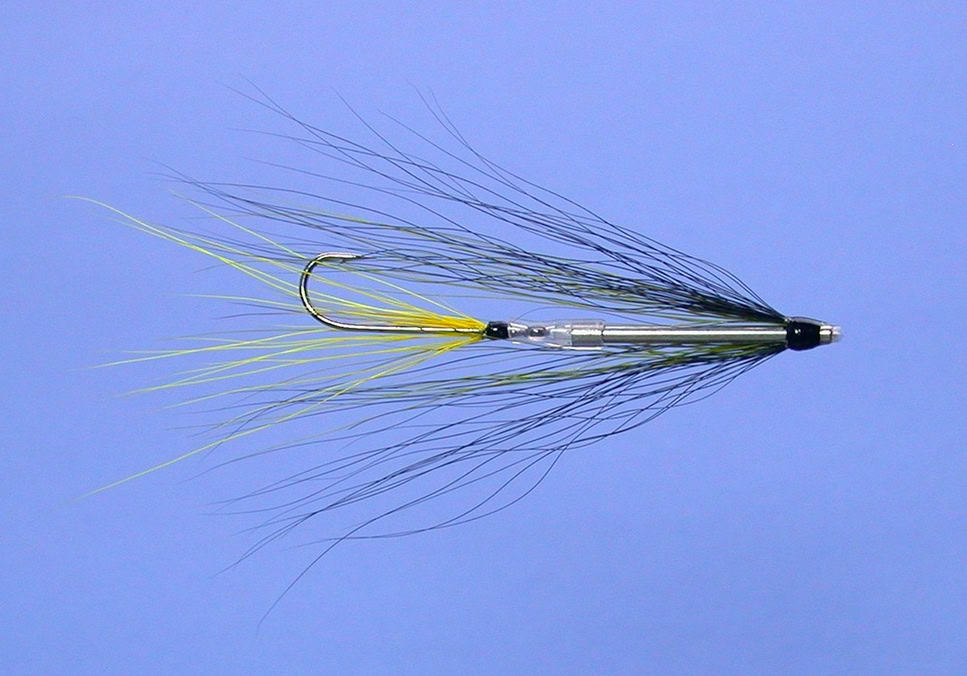
A Few More Tinglers
Shown below are a few more Tinglers with undressed hooks. These are dressed on 20mm long Needle Tubes, diameter 1.5mm, intended for night time sea trout fishing.
The use of a single hook on a tube fly may offer the following advantages:
1. With the growing awareness of the need to conserve fragile sea trout stocks, the single hook makes it easier to release fish quickly and without harm.
2. The use of a long shank, straight-eyed single hook, either dressed or undressed, allows the length of the lure to be extended without increasing the weight.
3. The use of a lighter single at the tail end of the tube allows the lure to swim, possibly more attractively, on a more even keel, with the bulk of the weight towards the front of the lure. In addition, a shorter and therefore lighter tube may be used (where a weighty lure is not required) in conjunction with a long shank single, which may be more easily cast on a light single handed rod.
4. An upturned single hook may be more easily hidden among the hair of the wing and therefore less conspicuous to a fish; may be less easily damaged on a rocky river bed or caught up on riverbed weed; may reduce the likelihood of hooking leaves while fishing in the autumn.
5. A variety of lightly dressed single hooks, in various materials, densities and shades, may add some mobility and vitality to the tube fly and variously dressed single hooks can be readily interchanged with various tube dressings to create a wide range of colour/shade/shape options. For example, four tubes and four dressed single hooks, all with different dressings, give a possible 16 variations of fly, 20 if we include the possible use of an undressed single hook.
Skinny Minny Tube Flies
I have always liked slim, sparsely dressed flies for sea trout night fishing. Below I illustrate a few examples of Skinny Minny Tube flies, dressed in various colours on slim stainless steel needle tubes, length 15mm, diameter 1.5mm. Colour matters little at night, as sea trout, like us, can see only shades of grey once the light has gone, but it may be useful to incorporate some degree of contrast in our night flies, i.e. some dark and light. These Skinny Minny tubes hold to that idea.
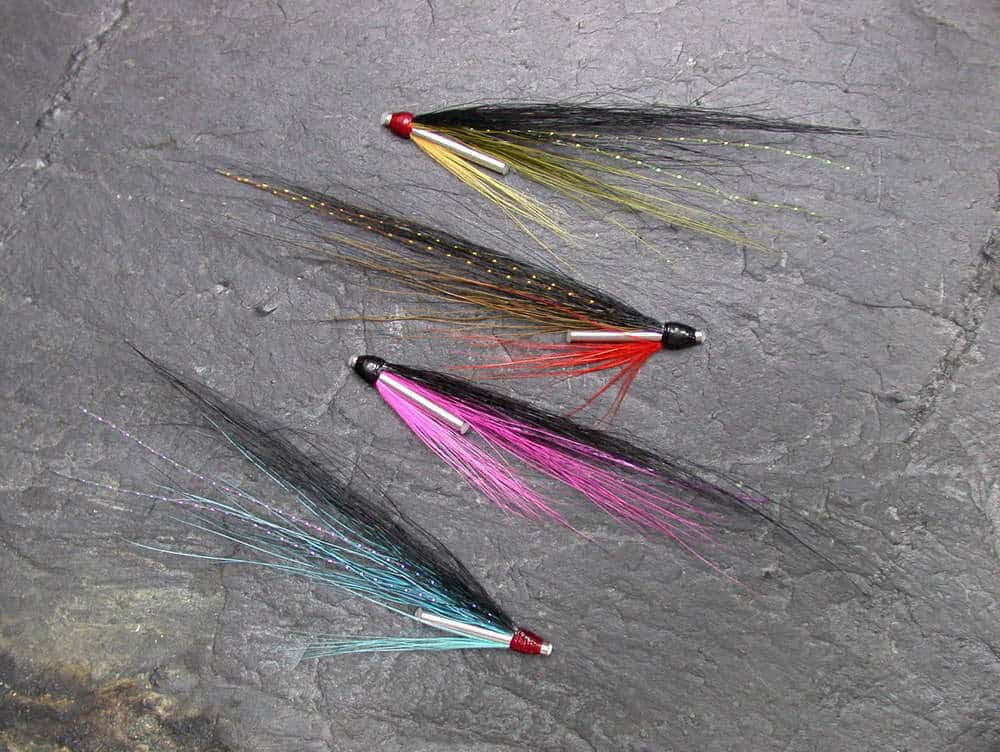
Dressing the Skinny Minny Tube Fly
These tubes are very simply dressed. They have no body dressing and all materials are tied in at the head of the tube as follows:
Materials:
Tube: a slim needle tube 15mm long, 1.5mm diameter
Beard Hackle: Cock hackle fibres of chosen colour
Underwing: Sparse bunch of bucktail, with a few strands of flash on top
Overwing: Sparse black squirrel tail
Tie the Skinny Minny in 3 Simple Steps
-
Lay a short bed of tying thread and tie in a beard hackle on the underside of the needle tube
-
Tie in a sparse bunch of bucktail with a few strands of flash on top if desired
-
Tie in a sparse bunch of black squirrel or Arctic fox tail on top of the bucktail. Varnish head.
The tubes may be armed with single, double or treble hooks, which may be secured using a short length of silicone tubing, or allowed to swing freely with the aid of a knot guard. Below are a few Skinny Minny tubes fitted with single hooks.
Note that the tube flies shown are fitted with upturned single hooks. Since undressed single and double hooks will tend to swim naturally with hook points uppermost, fitting double and single hooks in this way will aid the stability of the tube fly, while allowing the hook point to be hidden among the fibres of the hair wing. The upturned hook also precludes the possibility of a long hair wing catching on the underside of the fly (always a possibility with the hook fitted on the underside of the tube opposite the wing). A further advantage is that the hook point is less likely to be damaged on rocks or to hook riverbed weed (or leaves when fishing in the autumn months).
Needle Tubes for Sea Trout
Tubes may be dressed in a variety of styles, sizes and colours, as dictated by conditions of water and weather, season, time of night etc. and personal fancy. Shown below are just s few simple examples of night fishing tubes, dressed on stainless steel needle tubes of 25mm and 35mm in length, with an outside diameter of 1.5mm.
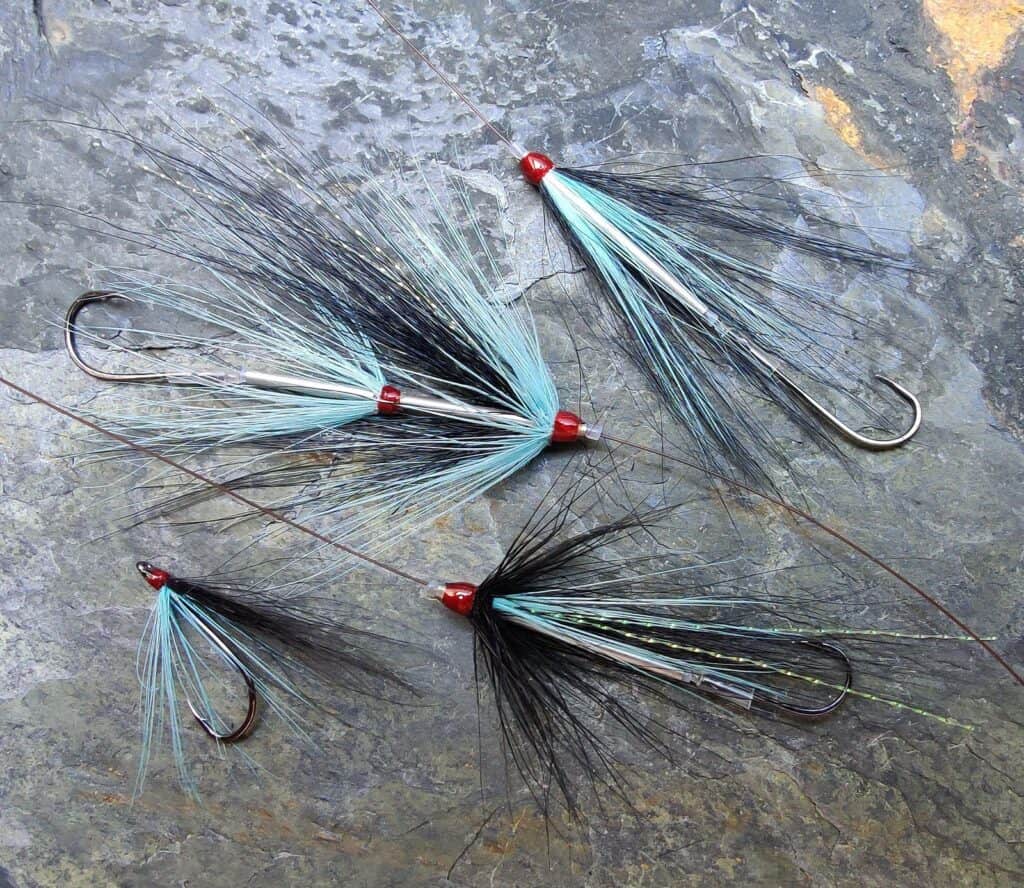
Sea Trout Intruders
The Intruder style of fly has gained favour, first among Pacific salmon and steelhead anglers in the Pacific North West and now increasingly for other game species such as Atlantic salmon and sea trout. Intruders can be dressed on tubes, more simply and more easily than on metal wire shanks. The stainless steel needle tube makes an ideal base for Sea Trout Intruder tube lures.
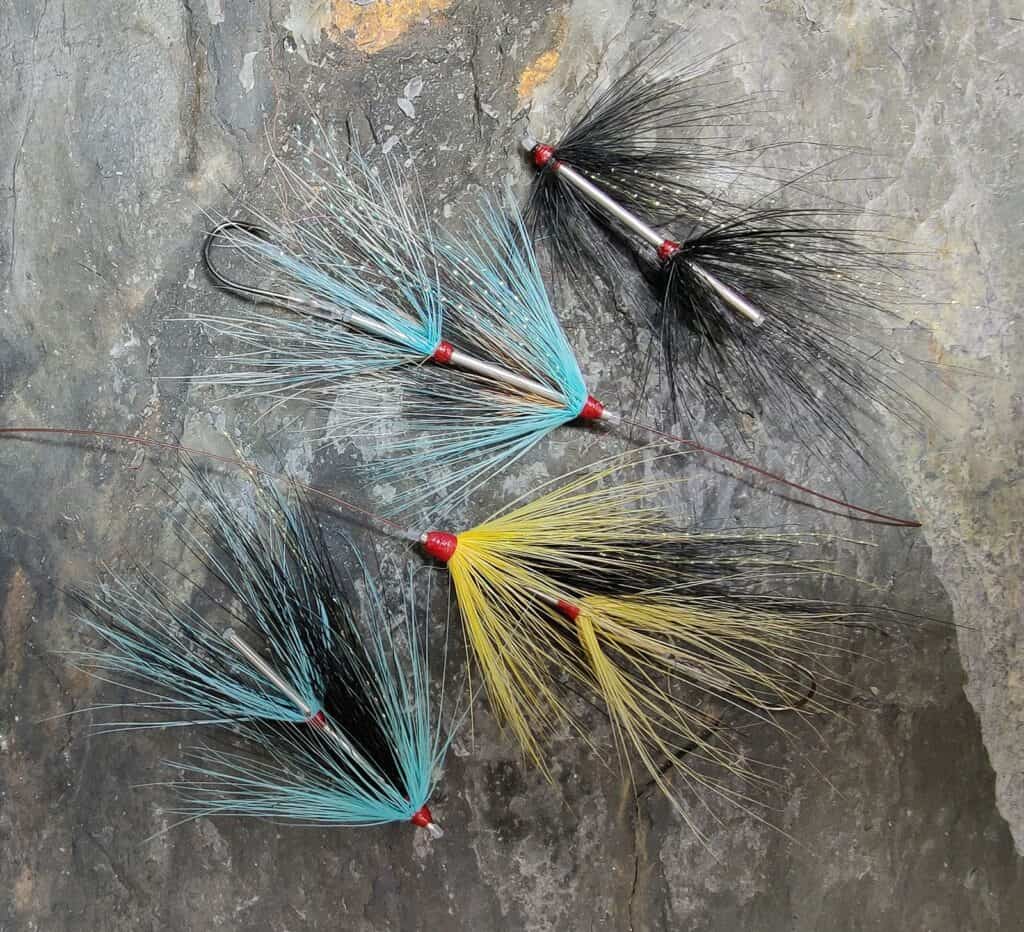
Flies dressed on Needle Tubes might be linked in tandem to create Twin Tube Intruder Flies an example of which is shown below. Such tubes might be adapted to any species of predatory fish.
